Review for The Bride with White Hair
Introduction
There is a whole lot of Asian cinema coming out from Eureka Films this November, and when it came to the Japanese cinema, I was quick to request a few check discs. I’ve yet to really experience a classic kaiju movie, while there were a couple of vintage sci-fi titles that intrigued me. I wasn’t expecting any unsolicited discs though, and I have to admit my eyebrows went up when The Bride With White Hair turned up for review. I’ve certainly heard of the film, and know that it has its fans, but this Hong Kong movie is a wuxia title; lots of supernatural kung-fu with the aid of wires. I’ve experienced enough of this genre, including falling asleep at Crouching Tiger, Hidden Dragon to know that it’s not for me. I’m not going to appreciate this film the way its fans will. Still, it’s less than 90 minutes, so it shouldn’t be too much of a chore.
Cho I-Hong is heir to the Wudang Sect, the strongest of the eight great sects that hold sway over the plains. He’s an unruly and unkempt student, even if his martial arts abilities are unparalleled. He has the temerity to fall in love with the Wolf Woman Lien, whip-wielding enforcer to the Demon Clan from the mountains, sworn enemies of the Sects. Tragedy looms when the two lovers seek to leave together, as the conjoined twins leading the Demon Clan have no intention of letting Lien leave so easily.
The Disc
The Bride With White Hair gets a 2.35:1 widescreen 1080p presentation with the following audio options; DTS-HD MA 5.1 Surround and PCM 2.0 Stereo Cantonese, 2.0 Stereo English, and 2.0 Mono Mandarin, with one translated English subtitle track. The film gets a 4k restoration for this release, and the results are fantastic. The image is clear and sharp, detail levels are excellent, and the colour reproduction is breathtaking. There’s also none of the post-processing done to make it look anything less than filmic. The Bride With White Hair is a visually stylised film; mostly studio set, and looking wholly theatrical and dramatic. It’s so atmospheric and visually effective that it holds the attention in a way that no other wuxia movie has managed with me. I was put in mind of Ridley Scott’s Legend when it comes to the film’s style.
For my viewing last night, I went with the Cantonese surround track, and although it isn’t as intensive a surround design as modern films, it’s still a little more effective than the stereo track. The action is expressed effectively, the music soundtrack works surprisingly well given the prevalence of eighties synths in a period film, and the dialogue is clear throughout. The subtitles are accurately timed and free of typos, but there is one issue at 35:22 into the film where a note to a subtitle editor has been left in, beneath the dialogue caption. Another issue is that the audio and subtitle options you select aren’t highlighted on the menu screen, and if you happen to have a remote on its way out, you may not even be certain that your button press registers.
Extras
The disc boots directly to a static menu.
The first release of the film will come with a 28-page booklet. There are two essays to read, one on the film from James Oliver, and one on Brigitte Lin’s filmography from Travis Crawford. Naturally there are plenty of images, stills and promo material to accompany the text.
There is plenty of extra material to go with the film, most of it created for this release, and subject to the vagaries of the Covid situation, distanced interviews and occasionally janky Internet connections, but everything is clear enough.
There are two commentaries with the film, one from Asian Film Expert Frank Djeng, and one from the film’s director Ronny Yu.
There is also an audio interview with editor David Wu which runs alongside the film for 80 minutes.
There is an interview with Ronny Yu that lasts 40:37.
There is an interview with composer Richard Yuen that lasts 23:21.
The interview with actor Joe Tay lasts 21:24.
There is an extensive interview with screenwriter Jason Lam Kee-To which lasts 56:47.
The only vintage content along with the Ronny Yu commentary is the Archival Making Of which lasts 12:00.
As you can see there is enough extra content with this release to keep you busy for ages.
Conclusion
Isn’t it always the way, that the film you go in expecting not to enjoy, turns out to be something really quite special? The Bride With White Hair very quickly won me over, although I have to say it was the initial profusion of style, colour, and inventive cinematography that took my breath away. This was a film I just had to watch because it was so beautiful. It’s only later that the story got its hooks into me, with a narrative that was simple but emotionally resonant, and characters that had more depth, were far more interesting than those I’ve seen in other films of this genre. It also didn’t hurt that the film is mercifully brief, managing to tell its engaging story in less than ninety minutes.
My biggest problem with this genre is that of cultural disconnect. These historical fantasies have a really strong reliance on the audience knowing the shorthand for the period in Chinese history, and some of the characters therein. These are re-imagined folk tales, archetypes and literary touchstones that are part of the culture in much the same way as King Arthur and Robin Hood are resonant in British culture. Most of that stuff goes straight over my head in films like this, one reason why I find it so hard to appreciate them, and I have to admit that without the booklet, I would never have thought of equating the historical period in the film, where the Qing were about to usurp the Ming in China with the year of the film’s production, a few years shy of the handover of Hong Kong to the Chinese by the British.
It’s the immediate story that does get my attention, the surface if not the subtext, and on the surface, The Bride With White Hair is a romantic tragedy up there with Romeo and Juliet, with a layer of magic and fantasy besides. The film also manages to keep surprising you right from the beginning, with an opening voiceover about sick royalty and a search for a magic flower that has nothing to do with the story except to introduce the protagonist. From there the film flashes back as he relates his childhood and growth, and how he fell in love with Lien, and the tragedy that ensued.
Essentially these two clans are in conflict, the ‘evil’ Demon Cult and the ‘noble’ Wudang Sect, although things aren’t as clear cut as they are presented. Cho I-Hong falls for Lien, and that is a love that cannot be allowed. The film is replete with interesting characters, Hong’s long-weary master, and his more power hungry clan members. There’s also the leaders of the Demon Cult, conjoined twins, brother and sister, whose initial appearance in the film is deceptive and fluid, like one person with two incarnations; both chewing the scenery with mouth-watering malice.
I can’t reiterate enough just how gorgeous this film looks, and no static screenshots can do it justice. But even better, the story really works well, and the characters draw you into the film. I think The Bride With White Hair is the one wuxia film to watch if you don’t like wuxia.
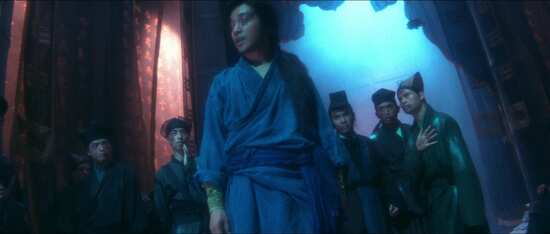
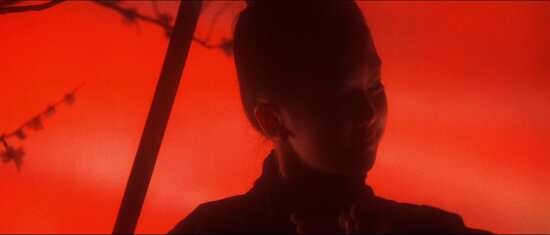
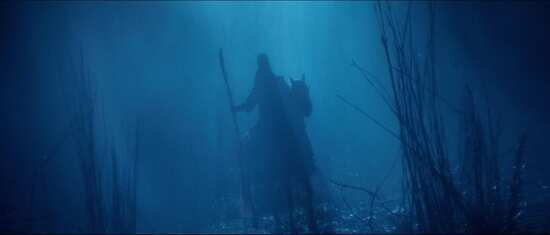

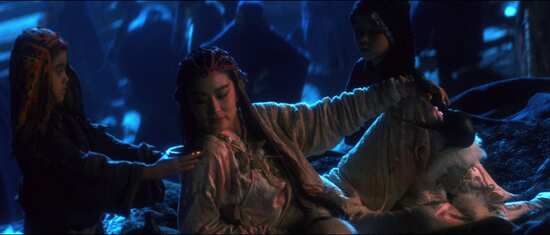
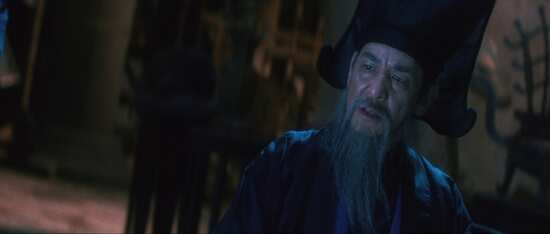

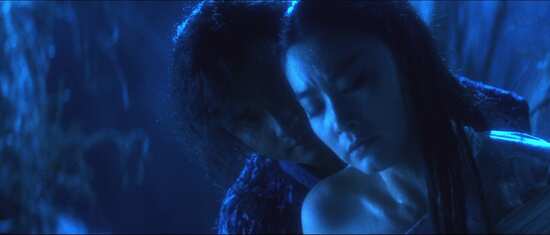
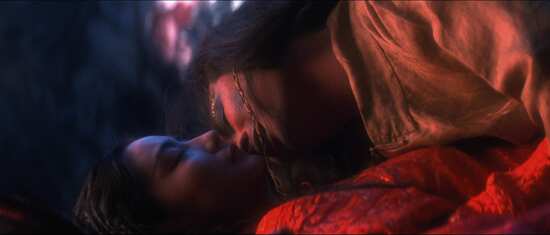
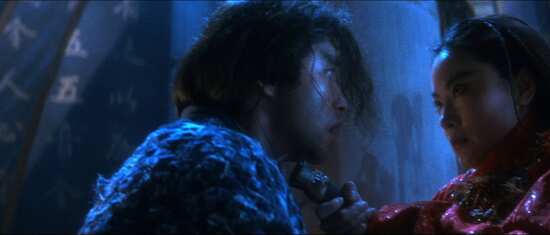
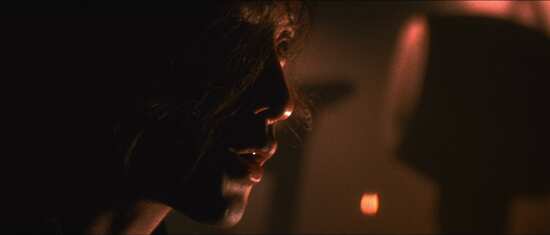
Your Opinions and Comments
Be the first to post a comment!